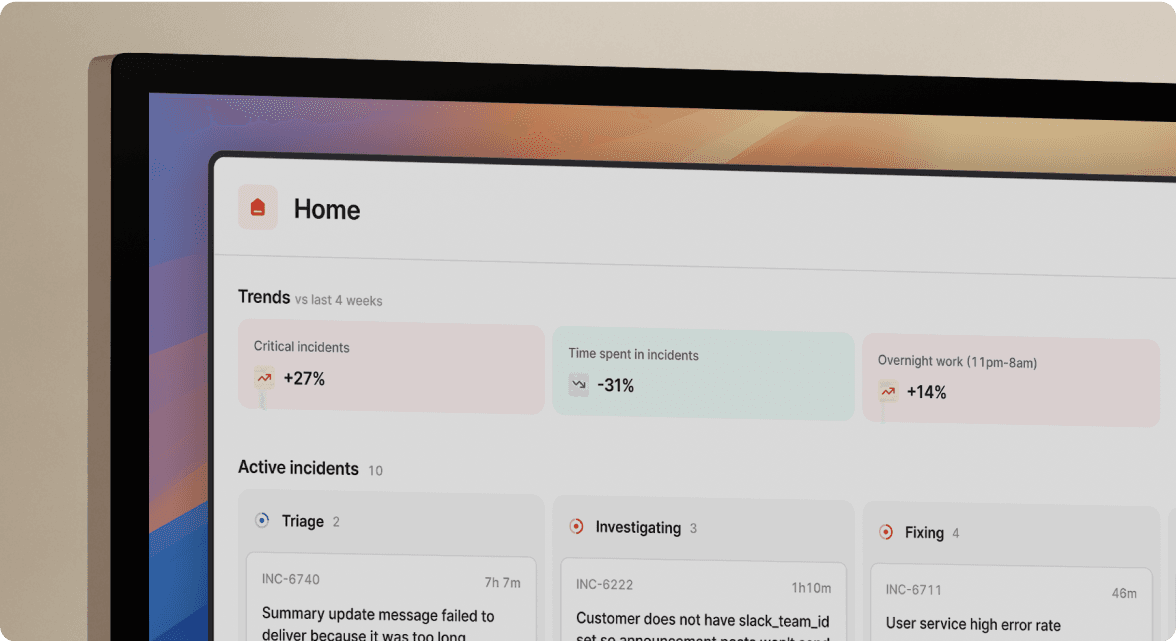incident.io vs Building in-house
Learn how incident.io compares to Building in-house
Many organizations will either follow a manual process or build tooling in-house. This page explores the pros and cons of this approach.
Opinionated guidance vs fully customized
Building tooling in-house gives you full control over how you want to run your incident management process. If you’re confident you have a strong process and have the time and resources to invest in building something high quality, this option could work for you. The benefit of using incident.io is that we provide a tool that's ready to go. At incident.io we’ve used our years of experience - running hundreds of incidents - to create a tool that supports your team when it matters most. We also have a large customer community, which means we learn from opportunities and experience across the industry and use this to continually improve our product.
Monetary cost vs opportunity cost
Whilst you pay a fee to use incident.io, you should bear in mind that there is an opportunity cost to building tooling in-house. Not only is there an upfront time investment (which is likely to be substantial if you want to build something that is polished and withstands the test of time), but there are ongoing costs in terms of maintenance and training (see this article we wrote the topic). We ran a survey in August 2022, where our customers told us they saved up to 6 months of engineering time by buying incident.io vs building their own solution.
Ability to scale
If your company is fast-growing, building in-house tooling could present challenges for you later down the line. Training new starters to use your tooling will take time, and ensuring continuity if the employees who originally built the tool leave can present challenges. With incident.io, you can scale your business rapidly with confidence that the tool is simple to use, and is supported by a team of experts to guide your team where needed.
Reliability
You want to be able to trust that your incident management system is going to work. When things go wrong, the last thing you need is to have to deal with a broken incident management system at the same time as trying to fix the real problem. The benefit of using external tooling is that it will be more reliable and if something does go wrong, your team won’t have to spend time fixing it - it’ll be taken care of for you.
So good, you’ll break things on purpose
Ready for modern incident management? Book a call with one of our experts today.

We’d love to talk to you about
- All-in-one incident management
- Our unmatched speed of deployment
- Why we’re loved by users and easily adopted
- How we work for the whole organization








